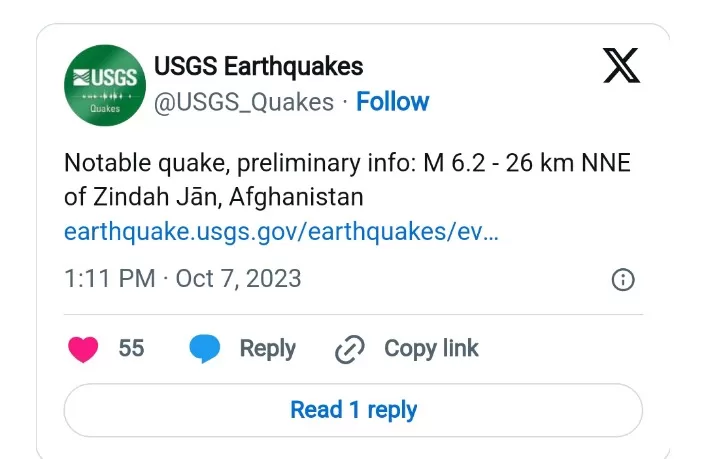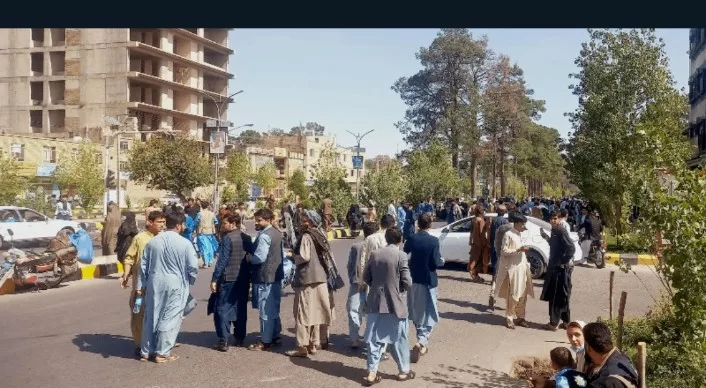In a harrowing turn of events, a seismic event of magnitude 6.3 jolted western Afghanistan on Saturday, leaving a trail of destruction in its wake. Officials have confirmed one tragic fatality and numerous injuries, with grave concerns that the toll may ascend as reports of landslides and building collapses emerge.
The United States Geological Survey (USGS) pinpointed the epicenter approximately 40 kilometers (25 miles) northwest of Herat, the region’s principal city, delivering a series of aftershocks measuring 5.5, 4.7, 6.3, 5.9, and 4.6 in magnitude.
The city of Herat was gripped by chaos as the tremors commenced around 11 am local time (6:30 am GMT), resulting in 25 injuries and one heartbreaking loss of life, as confirmed by a spokesperson for the Taliban government.
Eyewitness accounts shed light on the sheer terror that unfolded. Bashir Ahmad, a 45-year-old Herat resident, recounted, “We were in our offices, and suddenly the building started shaking. Wall plasters started to fall down, and the walls developed cracks; some walls and sections of buildings collapsed.” He further expressed deep concern for his family’s safety as communication networks severed amid the turmoil.
Mullah Jan Sayeq, a spokesperson for the National Disaster Management Authority, cautioned that the initial casualty count remains “preliminary,” with mounting apprehension that it may surge, particularly in rural and mountainous regions grappling with landslides.
In the immediate aftermath of the quake, crowds of women and children sought refuge in the open streets of Herat, far from towering structures, as aftershocks persisted for nearly an hour.
A preliminary report from the USGS paints a grim picture, hinting at the possibility of hundreds of fatalities, emphasizing that the disaster could manifest on a significant scale, necessitating a regional or national-level response.
Previously, the USGS had reported the initial quake’s magnitude as 6.2, with a shallow depth of merely 14 kilometers.

Herat, situated 120 kilometers east of the Iranian border, is revered as the cultural heart of Afghanistan and serves as the capital of Herat province, housing an estimated population of 1.9 million as per 2019 World Bank data.
This devastating seismic event rekindles painful memories from June of the previous year when a 5.9-magnitude quake struck the destitute province of Paktika, claiming over 1,000 lives and rendering tens of thousands homeless. It marked the deadliest earthquake in Afghanistan in nearly a quarter of a century. In March of this year, a magnitude 6.5 earthquake near Jurm in northeastern Afghanistan claimed 13 lives in both Afghanistan and Pakistan.
Afghanistan, nestled amidst the volatile Hindu Kush mountain range, is perennially susceptible to seismic tremors due to its proximity to the confluence of the Eurasian and Indian tectonic plates.
These catastrophic events unfold against the backdrop of an already daunting humanitarian crisis, exacerbated by the withdrawal of foreign aid since the Taliban’s resurgence to power in 2021.







